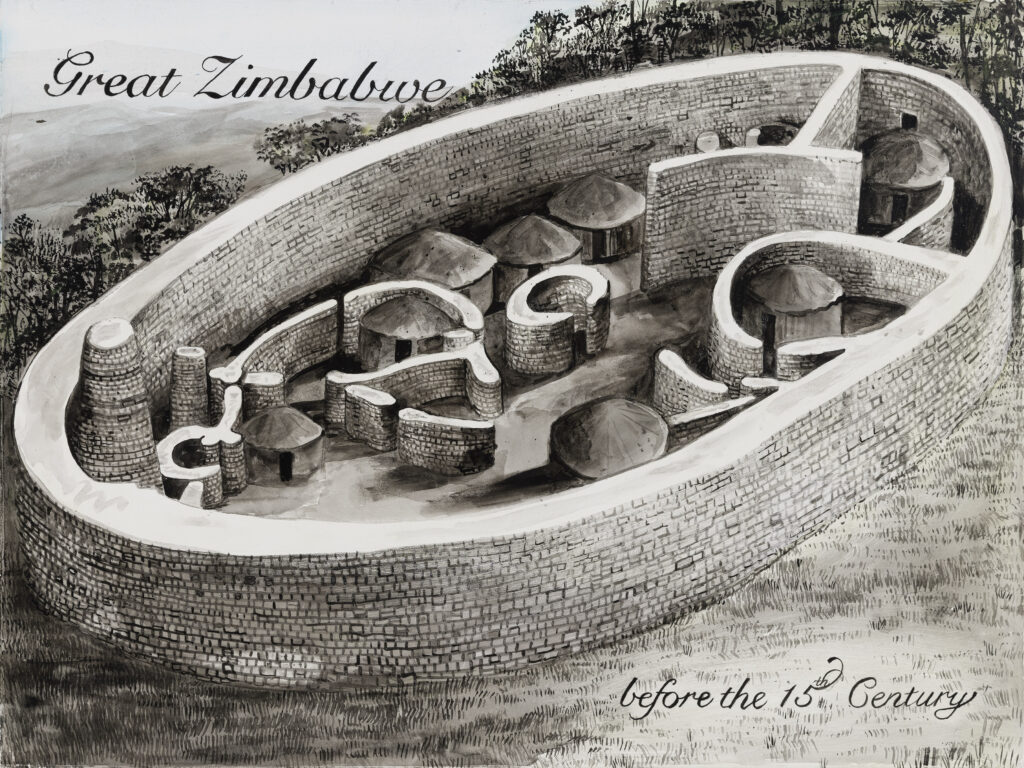Zimbabwe
Abandoned before the 15th Century

I first went to Africa in 1959 when I was a student at Columbia. I was taken, along with a group of other female students, by the remarkable Gwendolyn Carter, a professor at Smith. Despite having had polio and being able to only walk with crutches, she went absolutely everywhere — even up the hills to Great Zimbabwe. We spent a whole day there and it was fascinating to imagine the people who once lived there, although, to be honest, I think I’d most like to see the many inspiring people who I met on that trip. I expect they’re all dead now. That trip really changed my life. I ended up getting a masters in African Studies and then working for the Peace Corps in Africa and Washington for five years afterwards. Jane B.
Great Zimbabwe was a late Iron Age city in the south-east of Zimbabwe near the present-day town of Masvingo. The most notable features in the ruins are the 11 meter high curving mortar-less stone walls. The city was abandoned in the 15th century. Recent archeological research and excavations support it having been built by the ancestral Shona people starting in the 11th Century. The city covers an area of 7.22 sq. km (2.79 sq. m) and may have housed up to 18,000 people. The first recorded mention of the site was made in 1531 by Vincente Pegado, captain of the Portuguese garrison in Sofala, who noted that it was called Symbaoe or court, by the local inhabitants. The name zimbabwe has since been used to describe other similar but smaller ruins throughout the Zimbabwe Highveld. After its rediscovery by Europeans in the 19th century, the site became the focus for controversy. Some European archeologists argued that the site was built by the ancestral Bantu people rather than the Shona; others were unwilling to admit that it could be of African construction and argued that the site had been built by Arabs or Phoenicians. The government of Rhodesia actively censored all research that supported its construction by native Africans. Reclaiming the history of Great Zimbabwe became an important goal for Black nationalists seeking majority rule and in 1980 the country was renamed for the site, which it adopted as a national monument. Great Zimbabwe has also been recognised as a UNESCO World Heritage site. The painting is based on a reconstruction but I haven’t been able to find a source for the image.